If you have a passion for cooking, then you probably want to try all of the most popular cheeses in the world. And there are so many! Here’s a list of the cheeses you need to cook with at least once in your lifetime. It’s the shortest list we could make, but you’re still going to scroll a lot while reading!
There are hundreds of types of cheese in the world. Many of them are only known in some countries or areas, but there are some known across the globe. These popular cheeses are used in most recipes because everybody can find them at their nearby grocery store.
If you haven’t yet tried the most popular cheeses, now it’s the time! Taste them in small bites, to feel their real flavor, then experiment with all sort of recipes that require them! If you don’t know which cheese to choose for the dish you want to make, here’s a short guide to the most popular cheeses.
20 of the most popular cheeses and their uses
1. Mozzarella
Mozzarella may be the most popular cheese of all. It’s a southern Italian dairy product traditionally made from buffalo milk. Fresh mozzarella is generally white, usually rolled into balls of different sizes – from perline, which is the smallest (0.03-ounce/1 gram) to ovoline (4 ounces/113 grams). But it can be found in even bigger sizes: half pound balls or pound logs. There also is low-moisture mozzarella, which is aged cheese, harder and with a buttery color.
You can enjoy fresh mozzarella with a drizzle of olive oil, coarse salt, and pepper, because it has a slightly acidic or lactic taste, but not salty. You can make a simple Caprese salad or eat it with tomatoes in a sandwich. Keep in mind that the best pizzas are never without mozzarella!
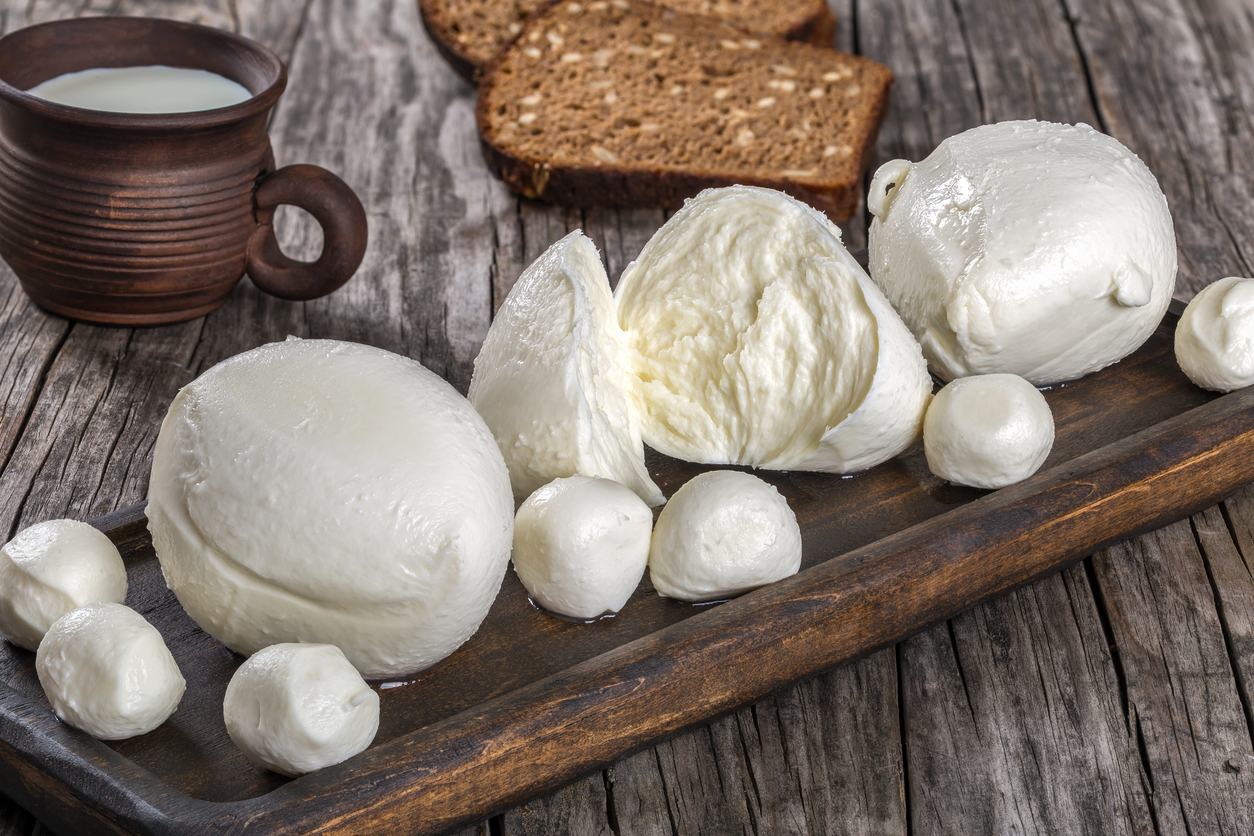
2. Parmesan
Parmesan, or Parmigiano-Reggiano, is considered to be among the top cheeses by cheese connoisseurs. It’s a hard, granular cheese with a strong, nutty, and bitter taste, and that’s the reason you should add a small quantity to your dishes.
Parmesan is mostly grated over pasta, used in soups and risottos. It is also eaten as is, as a snack or in cheese sauces. You can make crusts with panko, eggs, and parmesan for coating chicken before frying it, sprinkle it over a casserole dish or a salad, or add it into salty muffins.
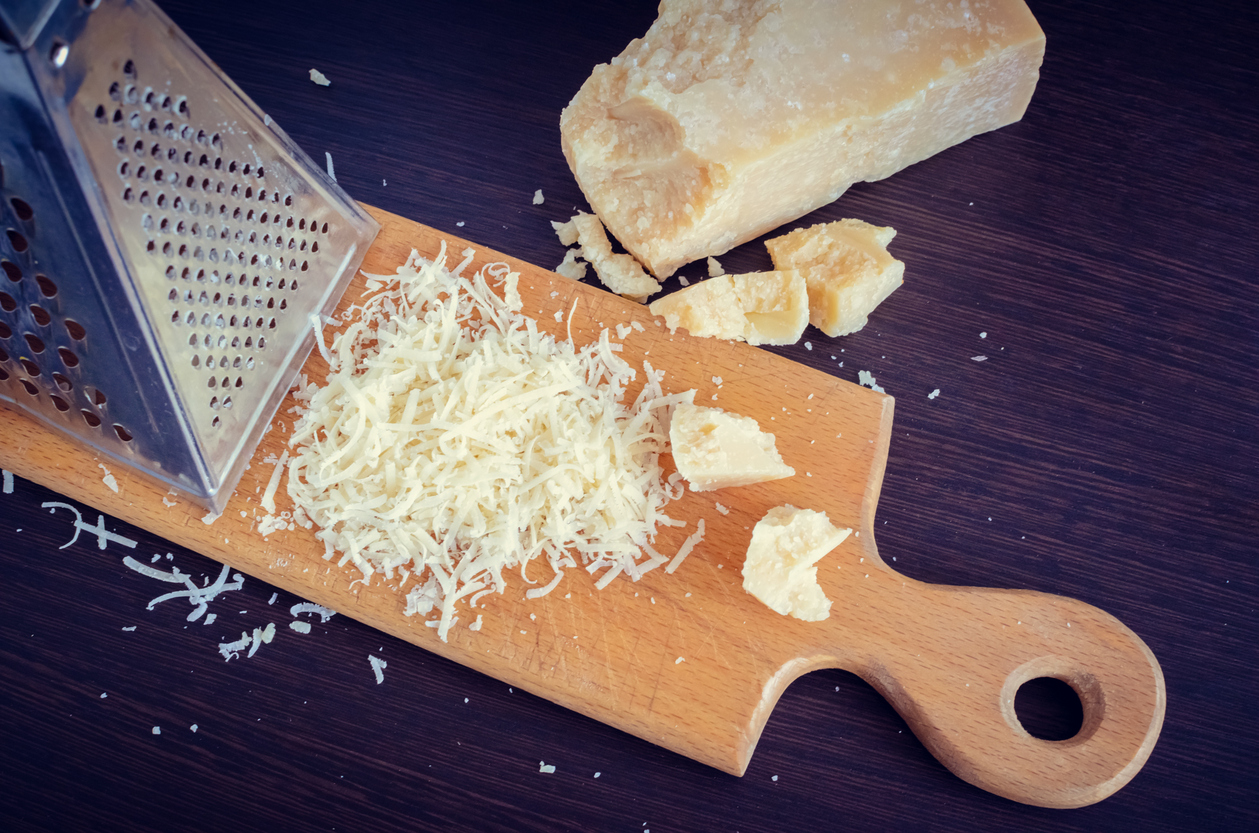
3. Cheddar
Cheddar cheese is dry and crumbly in texture, with a deep, tangy, nutty flavor. The color varies from ivory to straw to deep yellow. Cheddar is used to top burgers, as well as in other types of sandwiches. You can use Cheddar over casseroles or grated, in cheese sauces such as the one for mac and cheese, or to make veggie pies or quiches.
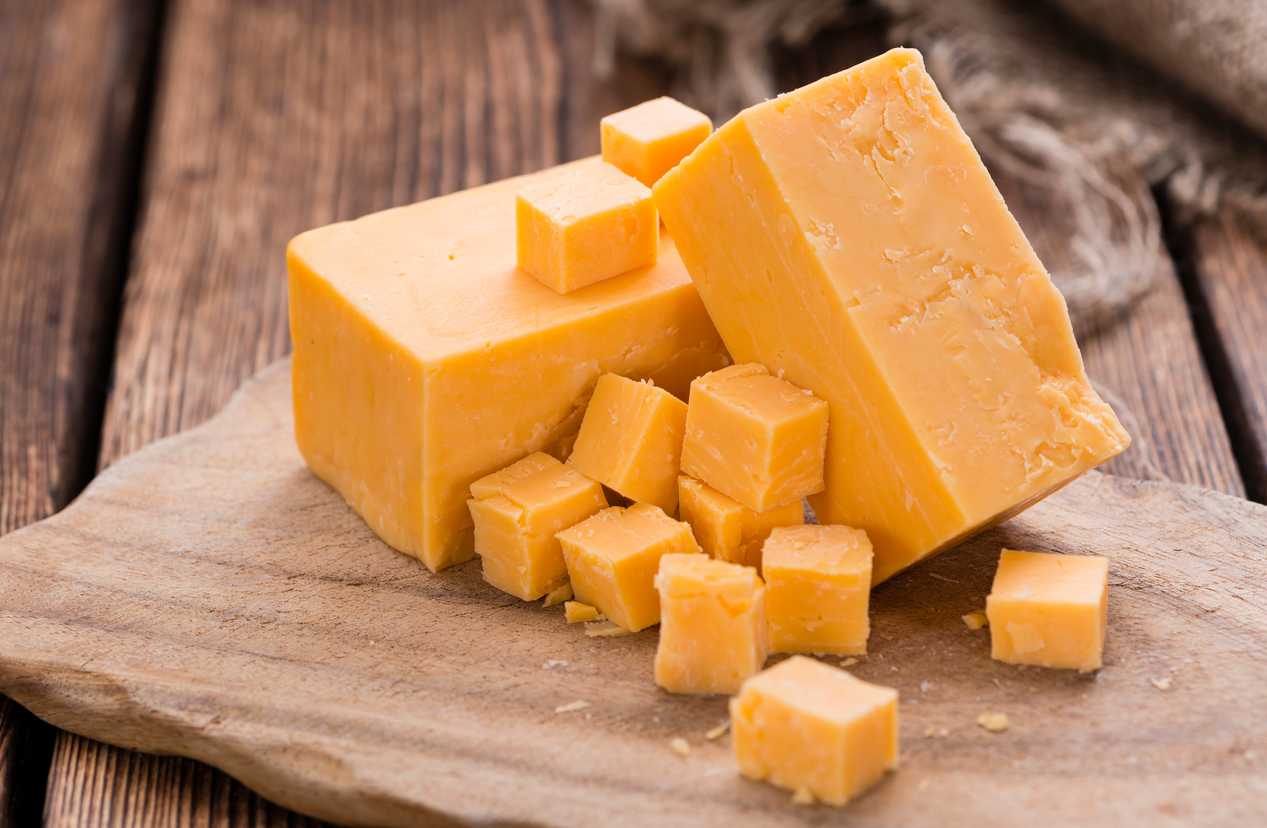
4. Gouda
One of the most popular cheeses worldwide, Gouda is a semi-hard to hard cow’s milk cheese from the Netherlands. When Gouda is aged the cheese changes its flavor and texture. Aged Gouda has a strong flavor, with a sharp yet sweet taste at the same time.
Young Gouda can be melted, but aged cheese is best as is or grated in salads or over casseroles. If you eat it simple, have it with beer, orange or apple juice, flavored tea, red wine, or white wine.
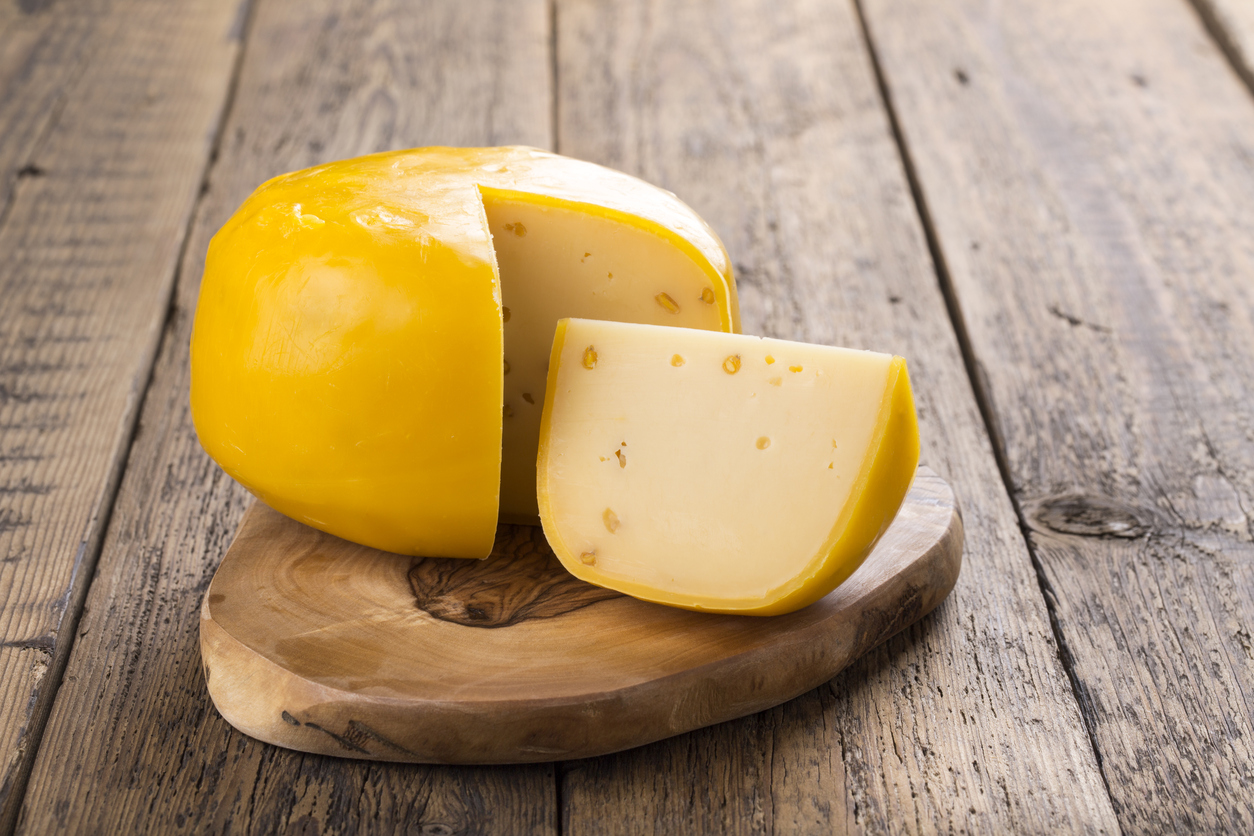
5. Swiss cheese
Swiss cheese resembles Emmentaler cheese. It’s a pale yellow color, medium-hard cheese. Some types of Swiss cheese are riddled with holes known as ‘eyes’, except for the ones who don’t have ‘eyes’ and are known as ‘blind’. It’s one of the most popular cheeses in America.
Its mild, sweet and nut-like flavor makes it suitable mostly for sandwiches – especially for Reuben sandwiches – but people usually add it to dishes like pies, frittatas, souffles, or omelets, melted on a steak, in cheese sauces or fondue.

6. Emmentaler
Emmental or Emmentaler is what many people think of when they hear of ‘Swiss cheese’ because they’re quite similar. This cheese is mild, a little sweet, slightly nutty, and a bit spicy at the end. You can use it in many dishes, but especially when you make cordon bleu, fondue, grilled cheese, and casseroles.
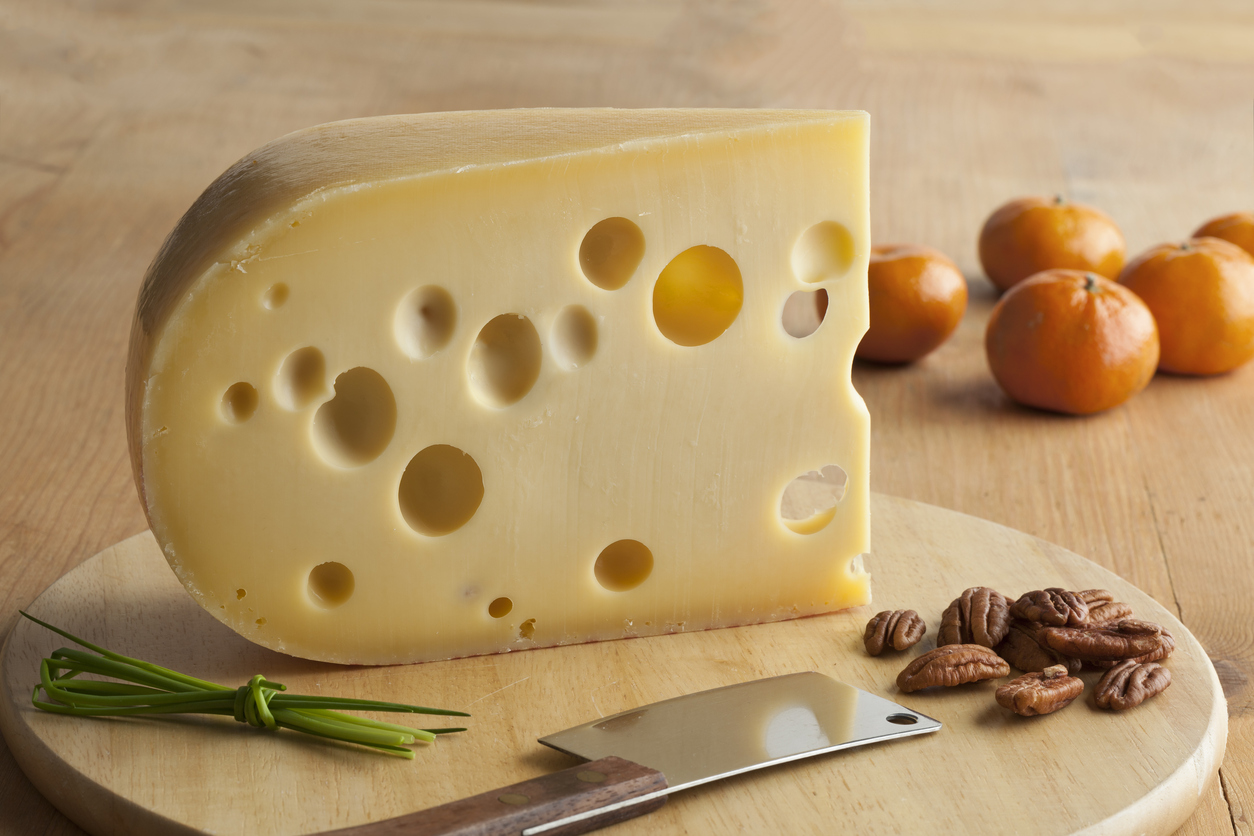
7. Brie
Brie is a soft cow’s milk cheese from north-eastern France, pale in color with a slight grayish tinge under a rind of white mold. This cheese has a nutty, fruity, grassy, and even mushroom-like flavor, similar to Camembert. Some people find it unpleasantly acidic, others think it’s pleasant, buttery, and a bit tangy.
Brie and meat make a great combo, but you can also spread the cheese over a slice of baguette. You can also serve baked brie with honey and apples, as a sweet dish.
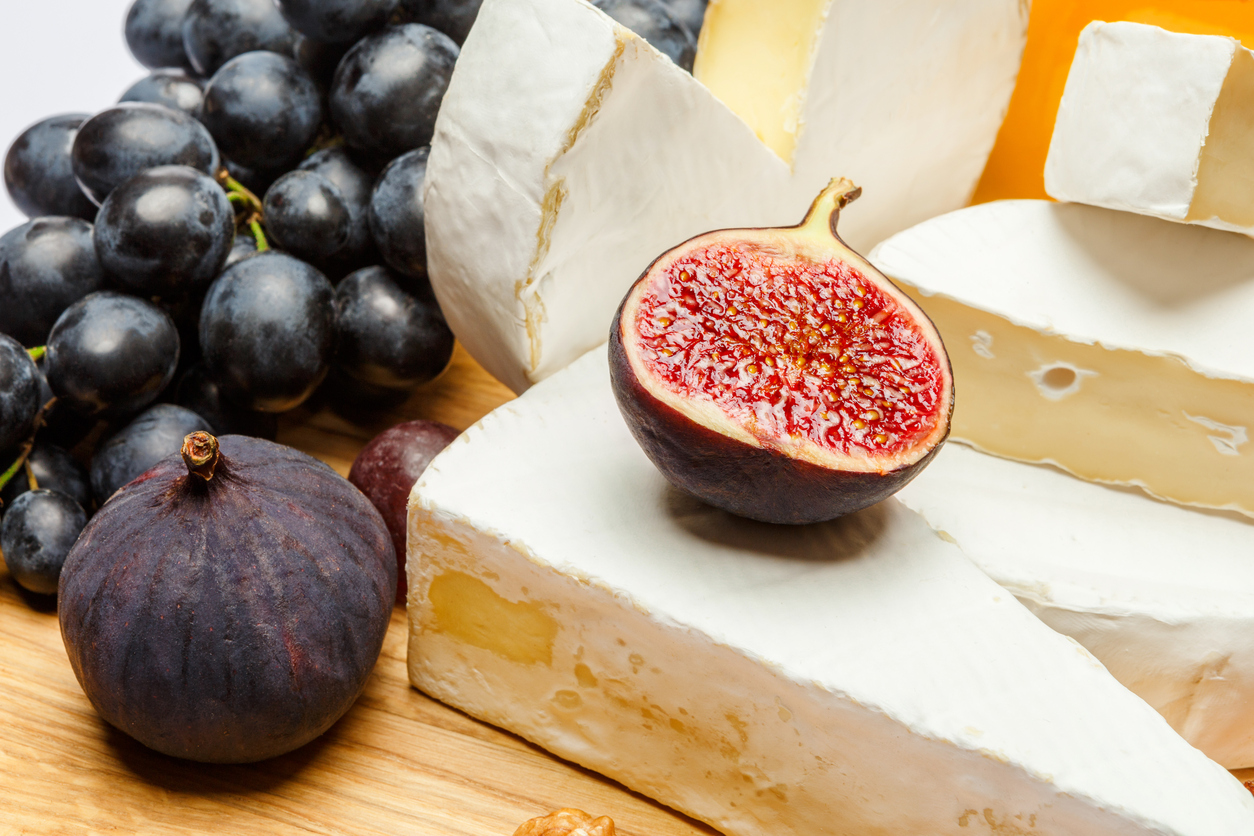
8. Camembert
Brie and Camembert look and taste alike, and they’re often served in similar ways. Yet there are subtle differences: Camembert has a deeper and more intense flavor. You can make baked Camembert and serve it with cheese crackers, toasted ciabatta slices, or garlic bread. You can also eat Brie and Camembert as is, with grapes and red wine.
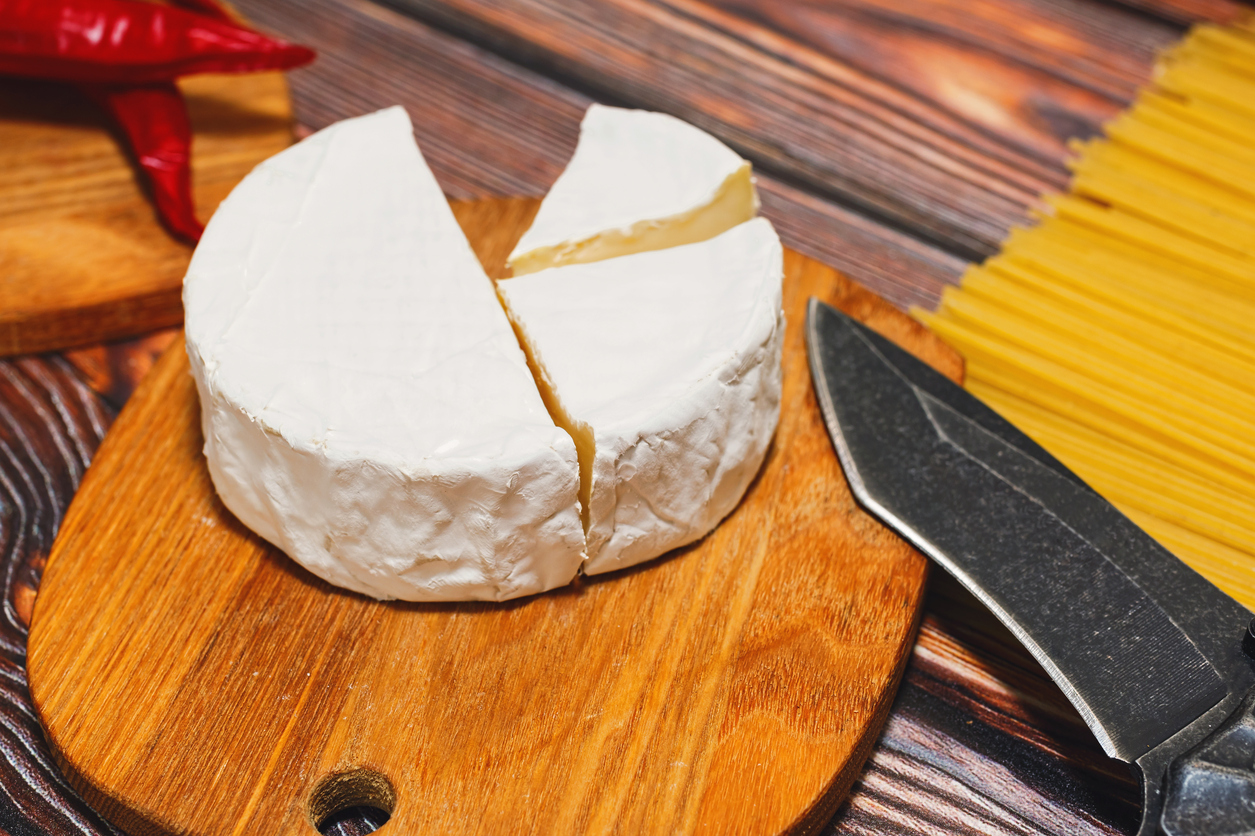
9. Gruyère cheese
Gruyère is a hard cheese, yellow in color, sweet but slightly salty, with a flavor that varies depending on its age. Gruyère cheese is generally known as one of the finest cheeses for baking because it’s great for melting. Traditionally, you use it to make cheese sauce. You can also add it to fondue. It’s a fine table cheese. It can be used grated in salads and pasta. A French onion soup isn’t complete without it.
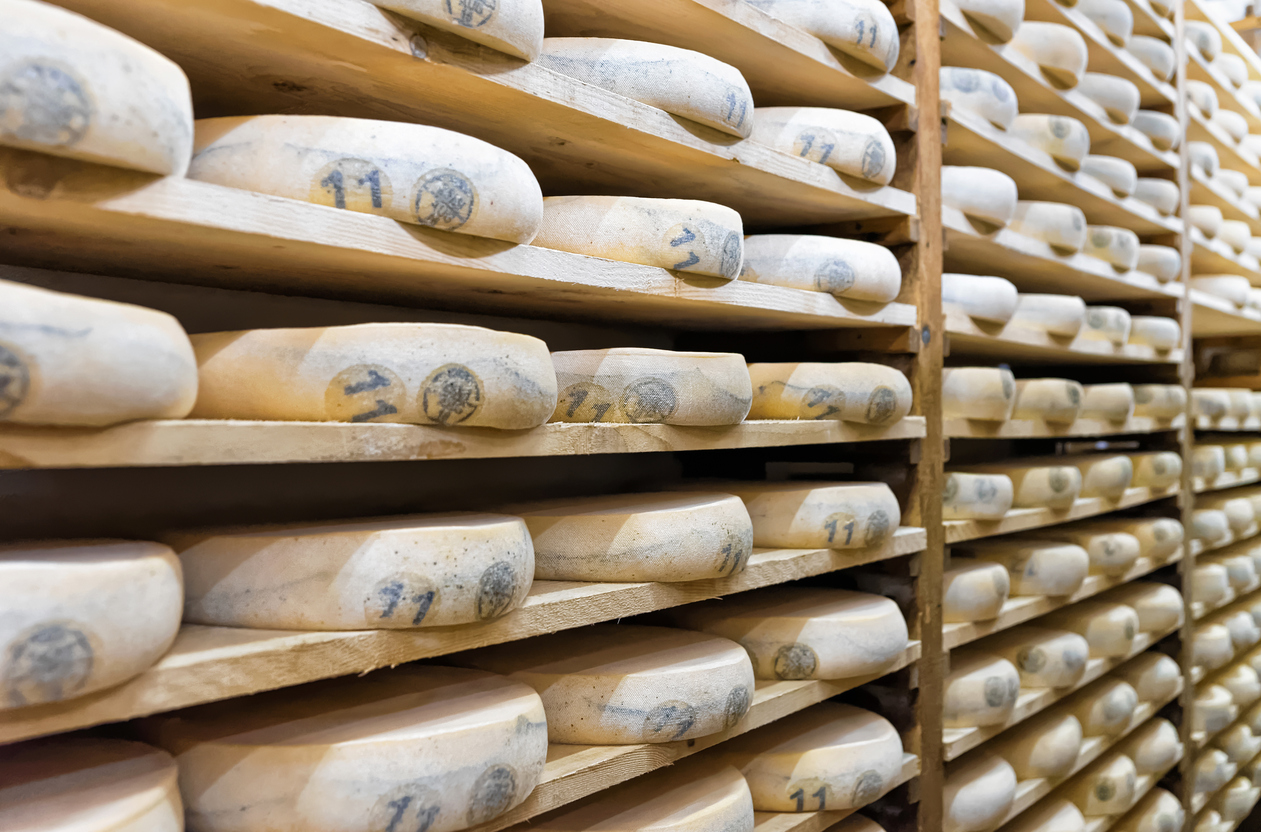
10. Feta
Feta is a Greek cheese made with sheep and goat milk. It’s a white brined cheese, salty, tangy, and moist, with a texture that can go from crumbly to moderately creamy. Crumble Feta cheese in salads and over roasted vegetables, add it to your sandwiches, add it in tacos and other Mexican dishes. Feta can be also served alongside olives, peppers, olive oil, and fresh flatbread.
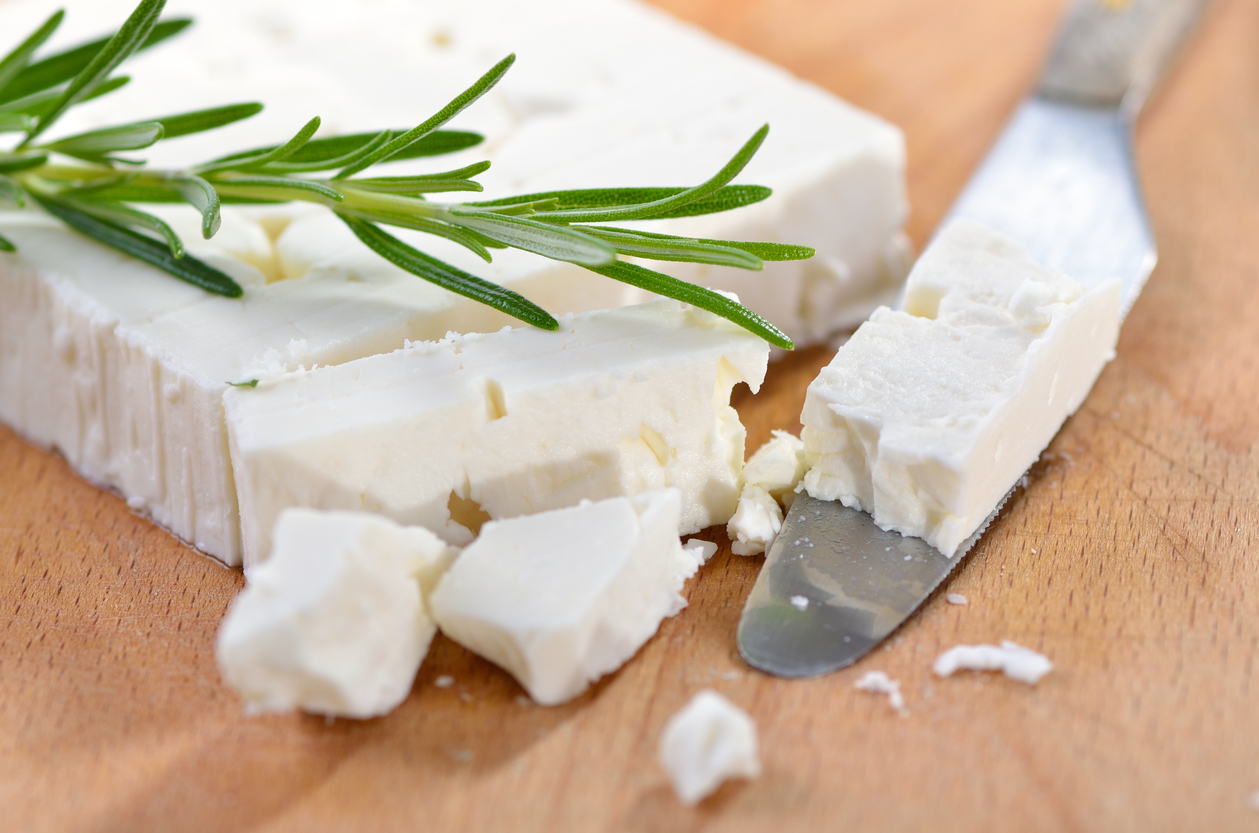
11. Monterey Jack
Monterey Jack is one of the few all-American cheeses. It’s a pale yellow semi-hard cheese made with cow’s milk. It has a mild and buttery flavor with a bit of tang, and it’s good for melting.
It’s one of the best options for melting it in casseroles, including a classic like mac and cheese, for making sandwiches, cheese dips, and grilled cheese.
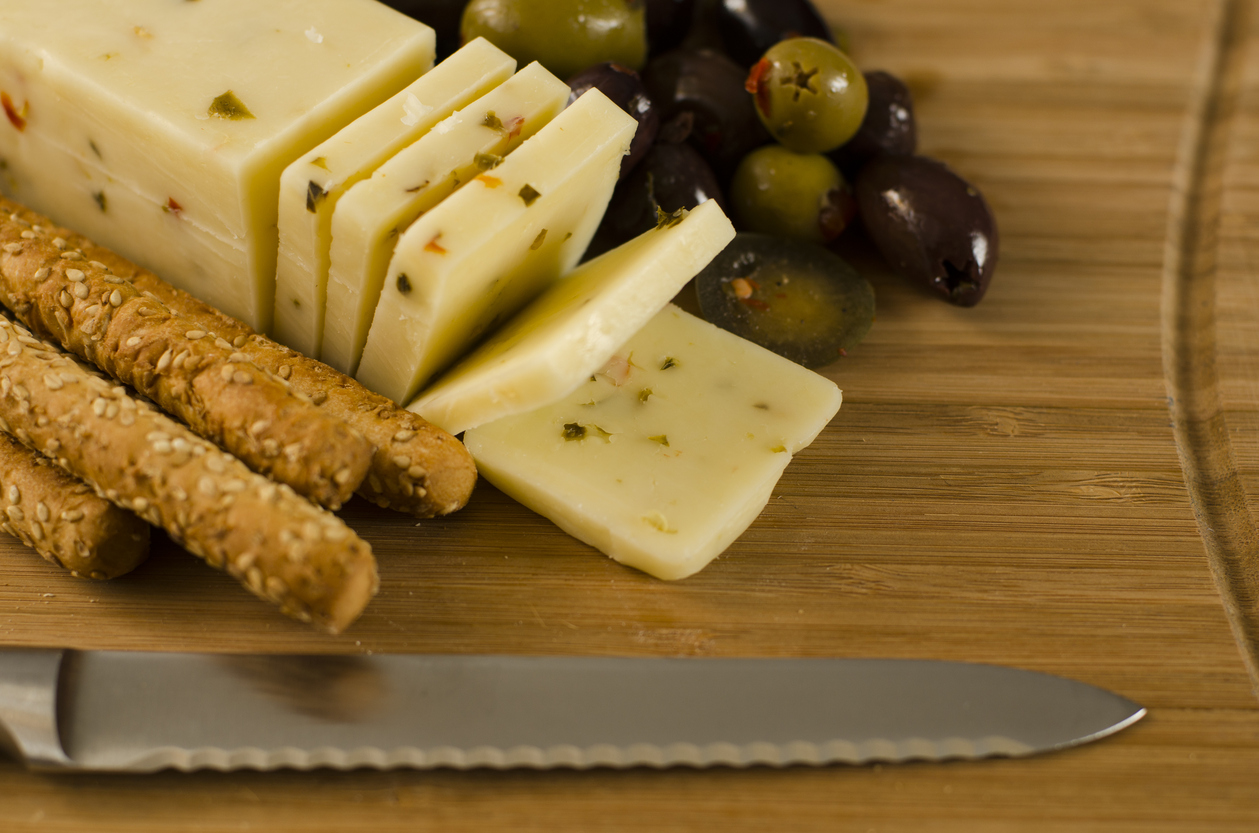
12. Provolone
Provolone is an Italian semi-hard cheese. Its taste varies depending on its age; from sharp or spicy to sweet with a very mild taste. Some versions of provolone are smoked. You can use it to complete your casseroles, pizzas, sandwiches, and baked pasta dishes.
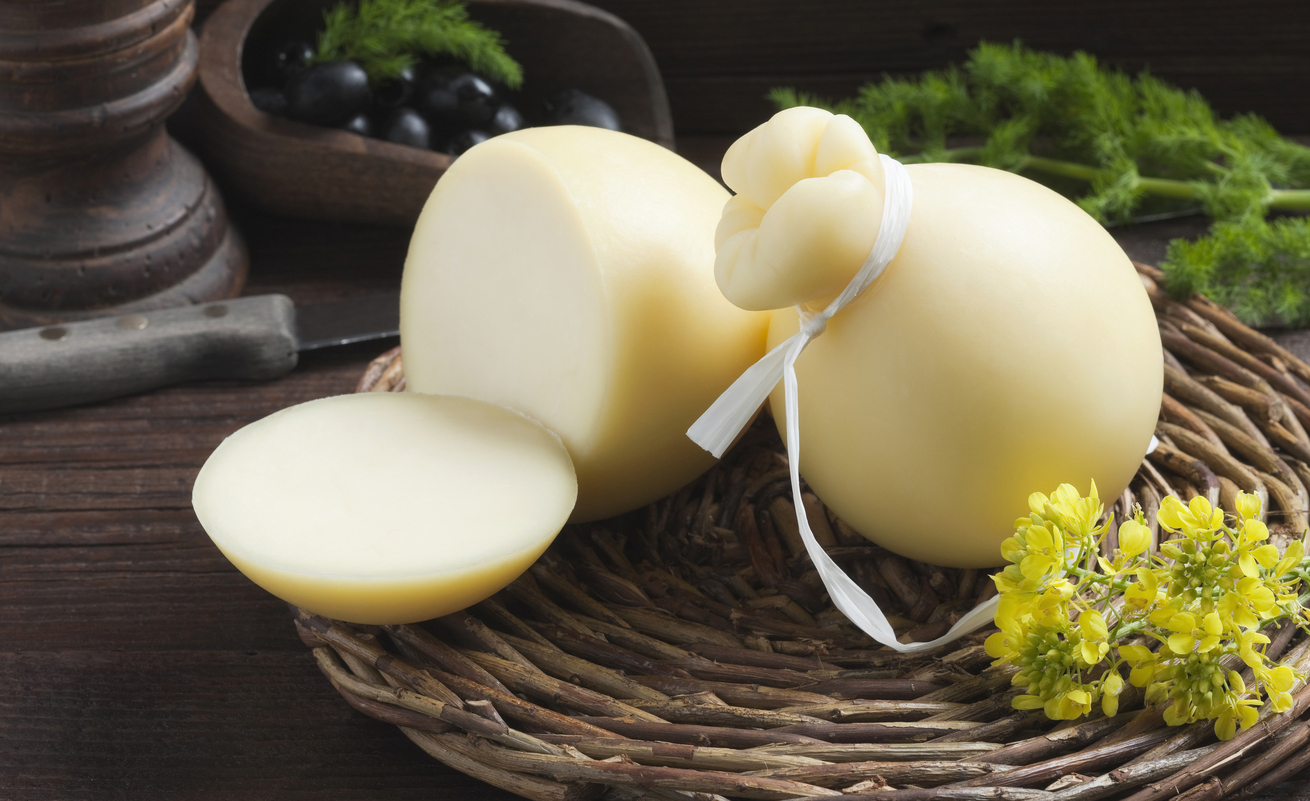
13. Edam
Edam is a Dutch semi-hard cheese, traditionally sold in spheres with a pale-yellow interior and a coat of red paraffin wax. It has a very mild flavor, slightly salty or nutty, and almost odorless when compared to other cheeses. As the cheese ages, its flavor sharpens.
Edam cheese goes well with chicken or potato dishes, in pasta, souffles, salads, fritters, soups, and sauces.
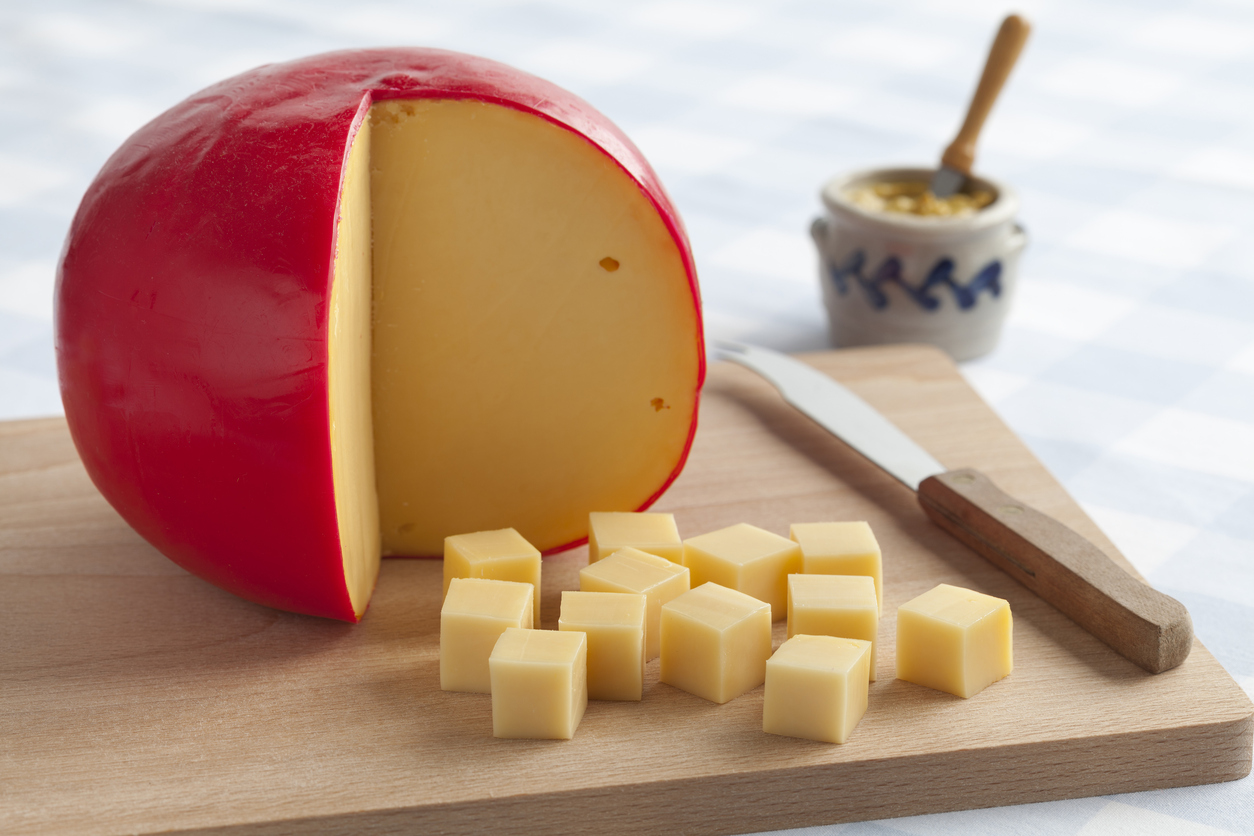
14. Blue cheese
Blue cheese is made with cow’s milk, sheep’s milk, or goat’s milk and has cultures of the mold Penicillium added. That leads to creating blue, blue-grey, blue-green, or blue-brown veins of mold in it. Also, Blue cheese has a distinct smell, that some people find unpleasant. It tastes like yeast, it’s a little spicy, and it’s creamy like butter. Blue cheese adds some class to a simple salad, roasted vegetables, or grilled fruit dessert. You can add pieces of blue cheese to top your veggie soup or puree.
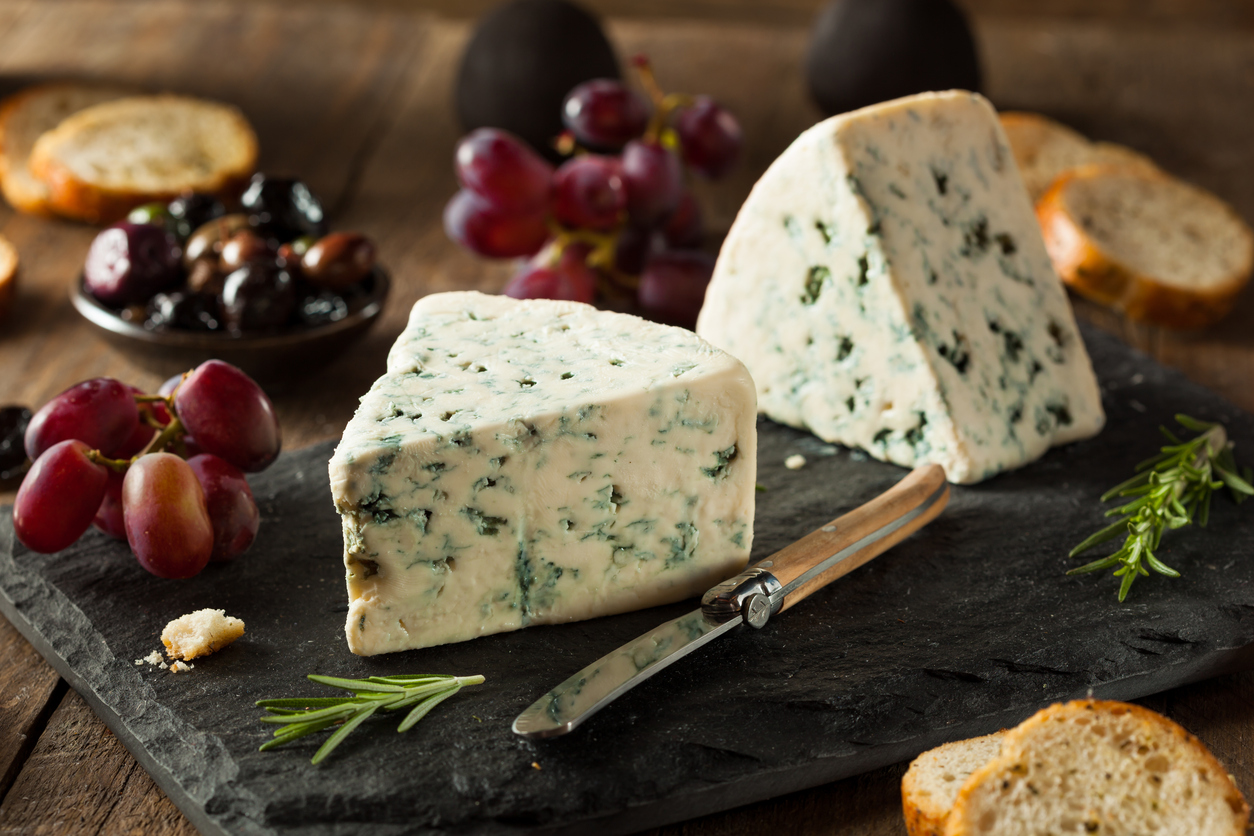
15. Gorgonzola
Gorgonzola is a type of blue cheese, but it’s special because of the small ‘blue’ stripes that actually has in it. It’s a mild, sweet, and milky cheese that is best served with a glass of red wine. You can also stir it into a risotto or slice it on your Quattro formaggi pizza.
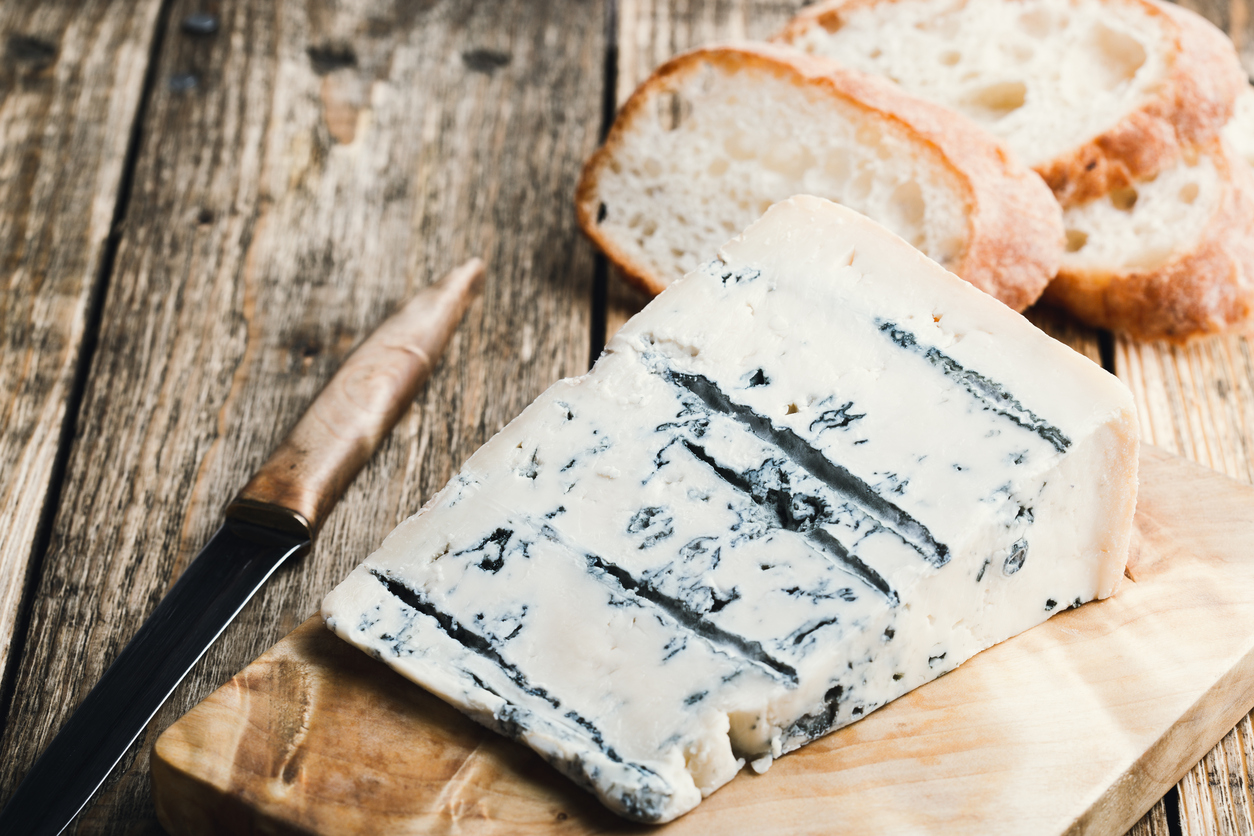
16. Roquefort
Roquefort is, together with Gorgonzola, one of the world’s best known blue cheeses. This French moldy cheese is like a moist, crumbly paste. It’s made from sheep’s milk and has a sharp, sweet, and nutty flavor that comes from the yeast.
There are plenty of recipes that use Roquefort, thanks to its distinctive taste and its melting capacity. It’s best eaten as is, with crackers or toast, or with nuts and honey.
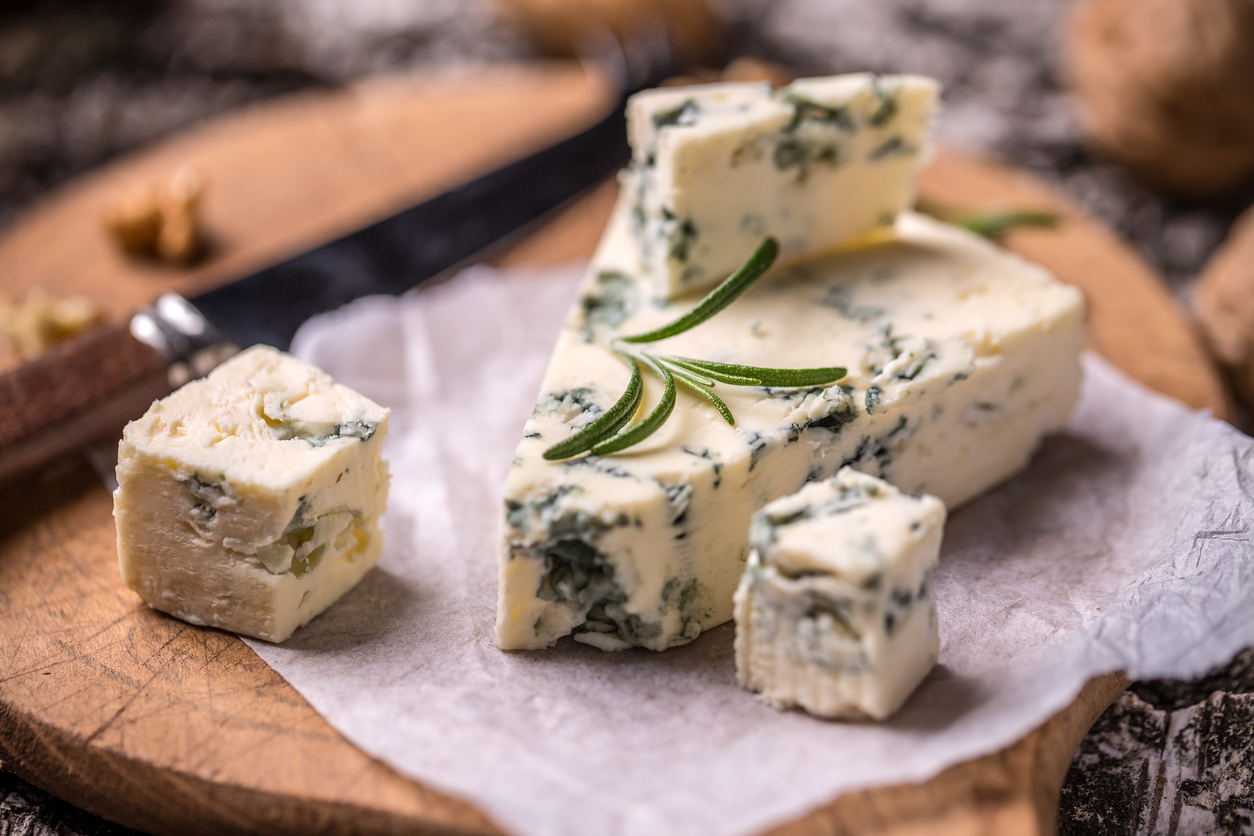
17. Ricotta
Ricotta is an Italian whey cheese made from sheep’s milk. This smooth cheese with a creamy mild sweet and fresh taste and a thick texture is very versatile. Plus, it’s low in fat, which makes it a good choice for almost any diet.
Thanks to its low salt content, Ricotta is perfect for both sweet and savory dishes. It’s actually perfect for everything from lasagna to pasta, from pies to cheesecakes. You can spread it on a bread slice and top it with veggies, sunny side up eggs, or fruit, and you can use it to make lots of dips.
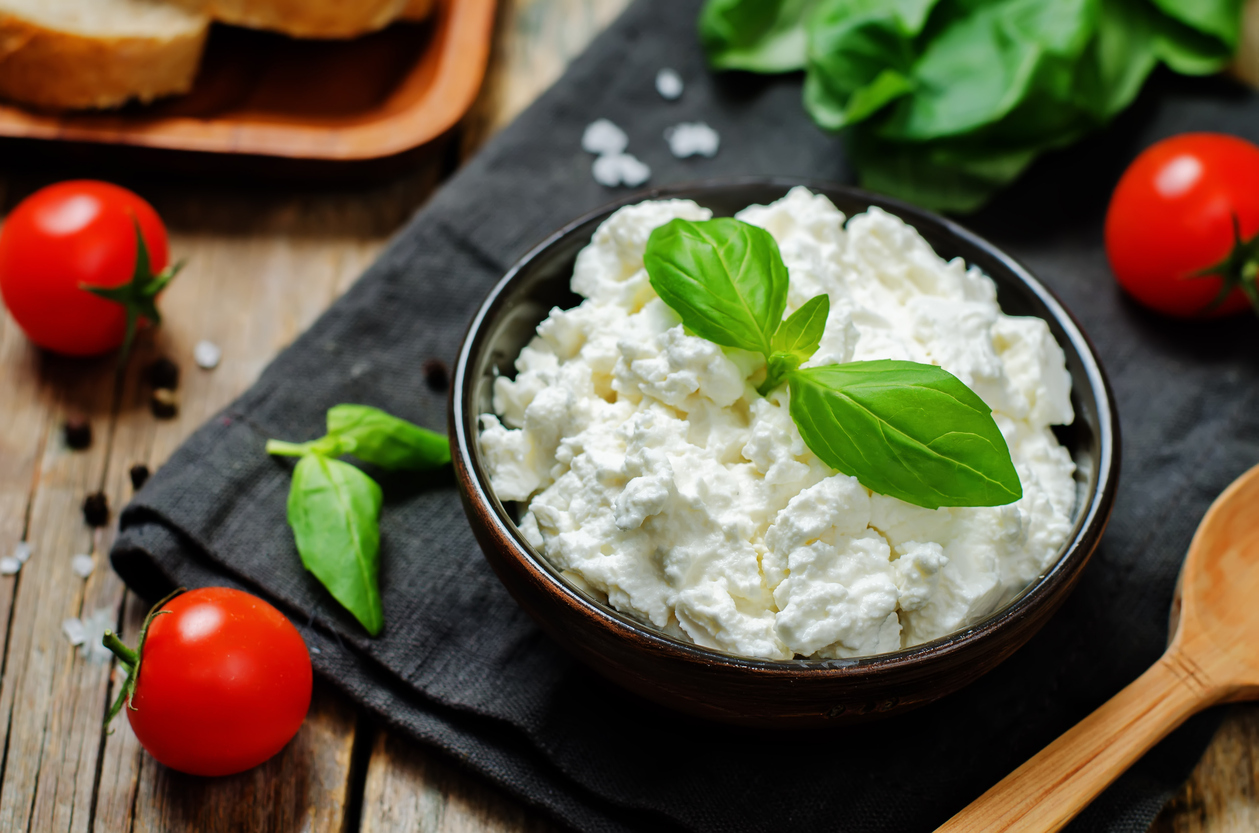
18. Cottage cheese
Ricotta and cottage cheese are often compared and some people replace one with the other. But they aren’t all that similar. Cheesemakers separate milk or cream into curds and whey. Then, the curds are used to make cottage cheese and the whey is used to make ricotta. That’s the reason why both cheeses – Ricotta and cottage cheese – have different textures. But they’re both soft and mild in flavor.
While Ricotta is described as sweet, cottage cheese is fresh, milky, and creamy, with a moderate saltiness to it. The texture of cottage cheese is chunky, from the curds.
You can use it to top stuffed baked vegetables, like potatoes and pumpkins, in casseroles, pasta, to make a dip or a quick sweet snack (combining it with fruits and granola), in baked goods, or incorporated in smoothies.
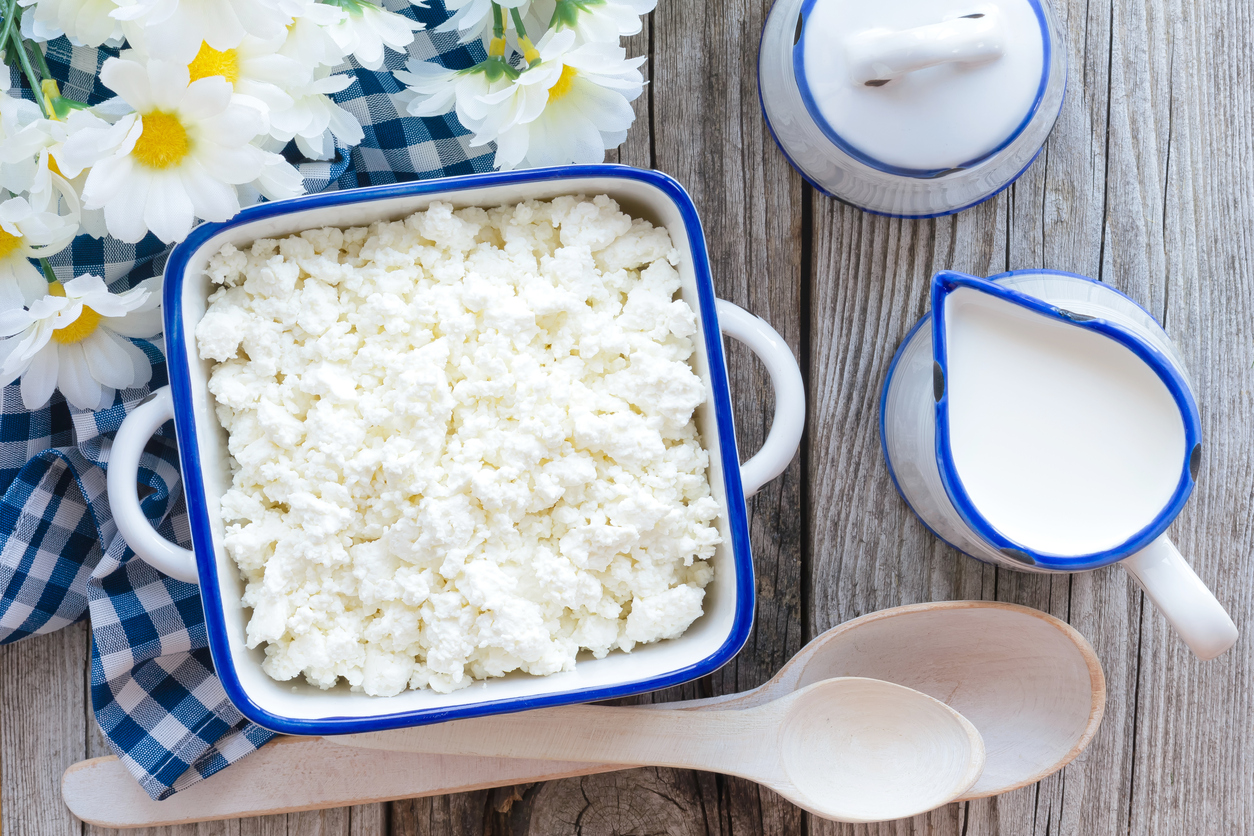
19. Mascarpone
Compared to Ricotta (which is smooth, but has a grainy texture), mascarpone has a very smooth texture with no lumps or granularities. Mascarpone is one of the most popular cheeses and is made from cream and citric or tartaric acid, which thickens the cream. It has a milky and slightly sweet taste and a buttery flavor which comes from its high butterfat content.
Mascarpone is best known as an ingredient in the Italian dessert tiramisu. But you can also use it in pasta, mac and cheese, lasagna, or in fresh desserts. Or you can transform it into a dip by combining it with some olive oil, herbs and spices.
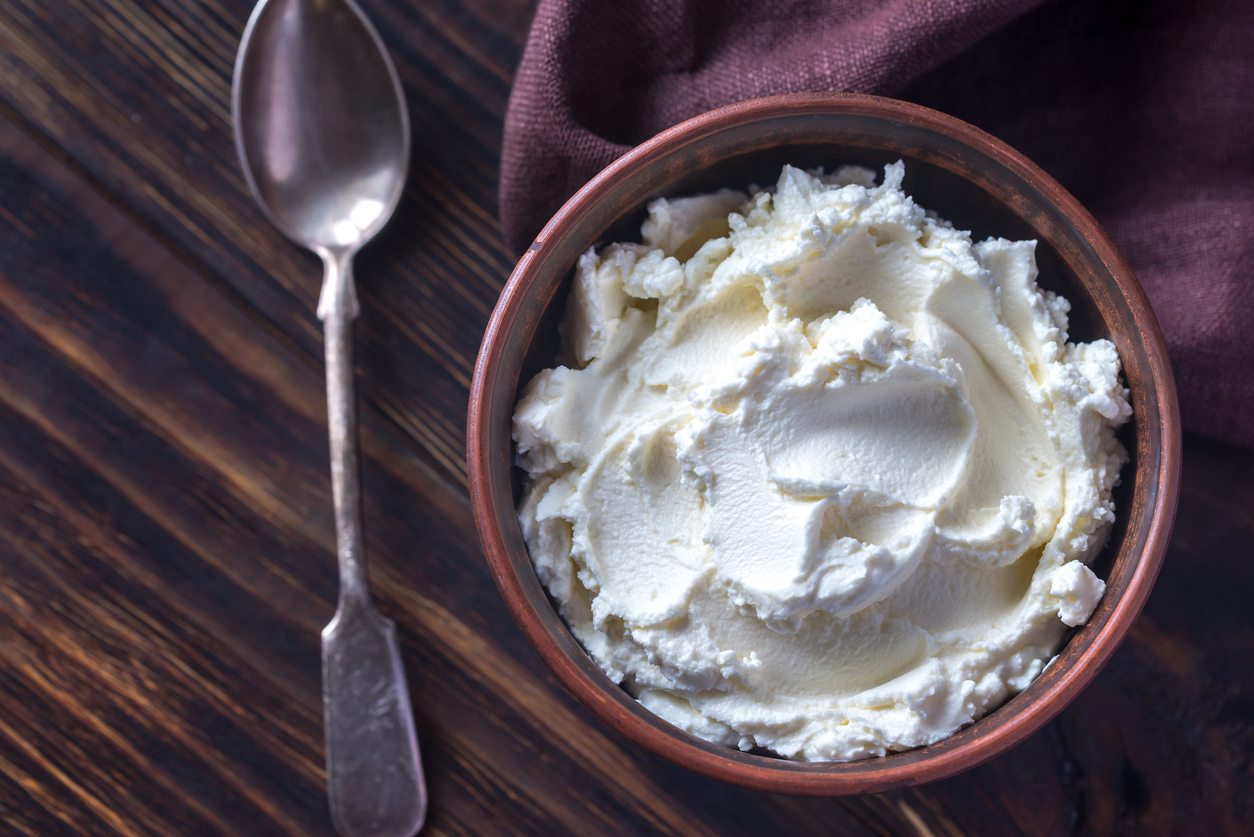
20. Halloumi
Halloumi is a Cypriot semi-hard brined cheese made from a mixture of goat’s and sheep’s milk, and sometimes also cow’s milk. It’s the best cheese for grilling because it has a high melting point. Because it’s also a salty cheese, you should combine it with something that dims its strong taste.
Just throw it on the grill, then serve it as a starter, drizzled with olive oil and some fresh mint leaves and a glass of wine. You can add it to salads, in omelets served with veggies, in couscous, seafood dishes, or pair it with fresh fruit such as watermelon and pomegranate.
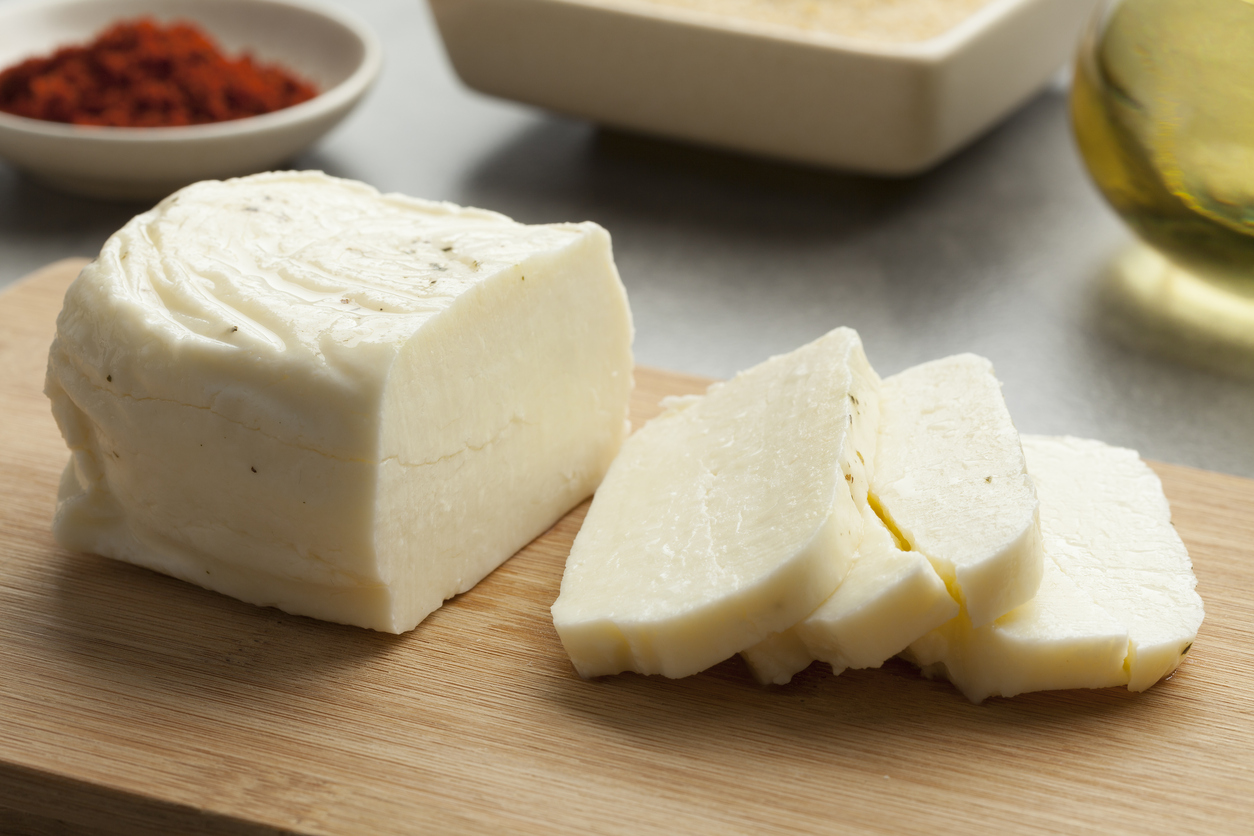



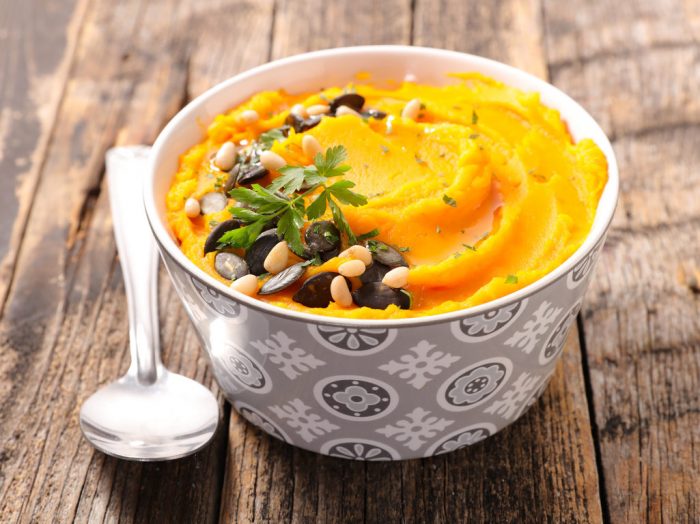
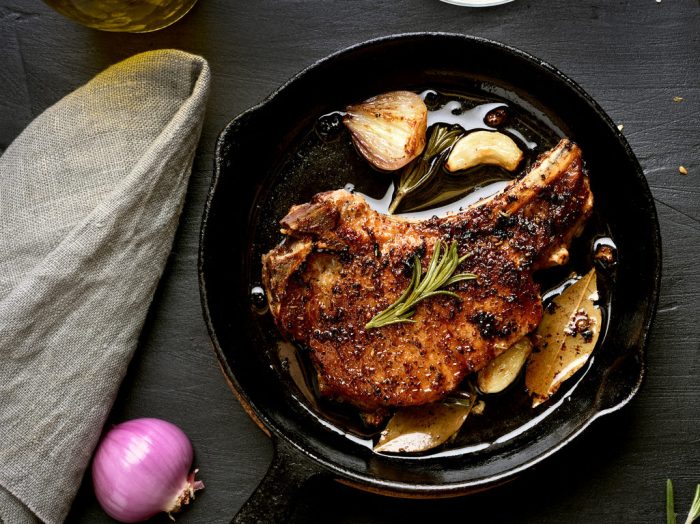
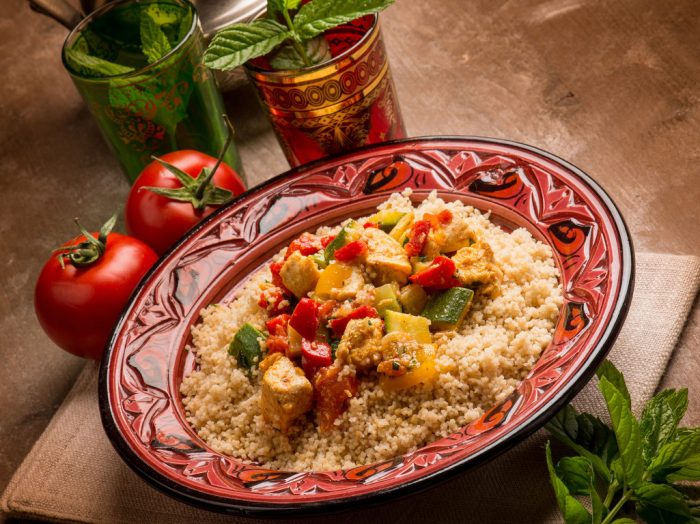
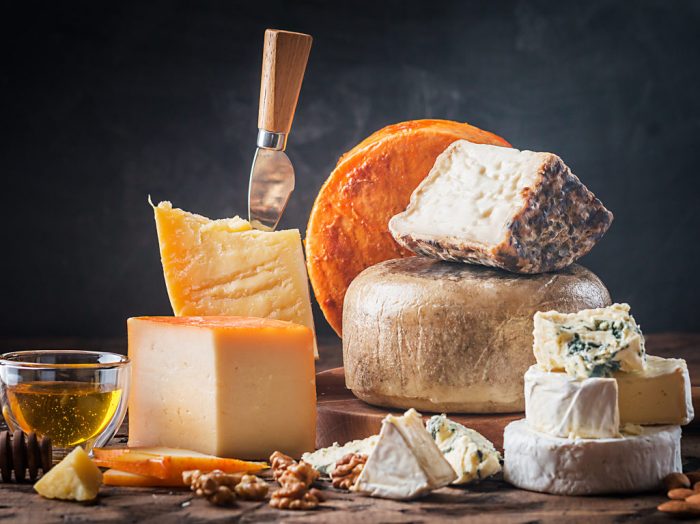
Hi Raluca,
thank you for your article on popular cheeses.
Which cheeses would taste good if you melt it down as a dip for cheetos or potato chips?
Which ones would be good for crackers or toasted bread?
Thank you,
Douglas
Thank you so much Raluca. I have learned about the most popular type of cheeses and how to use them in different recipes. Your article is very simple and clear with beautiful pictures.
Loved your article but I did not see the Koza Gida cheese what can I substitute that with?